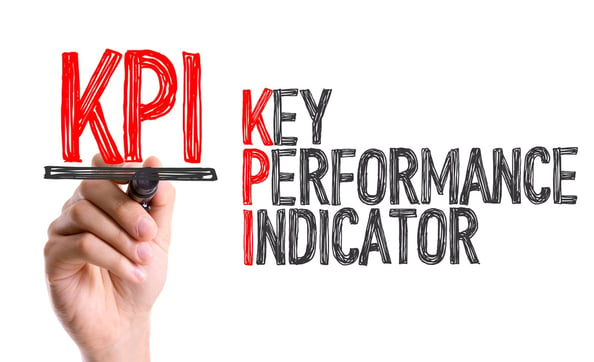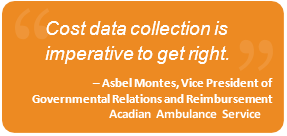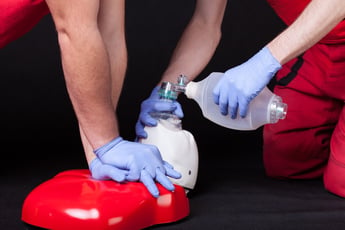Meet the New ZOLL Dispatch and ZOLL Respond CAD Solution
Why Your EMS Agency Should Be Tracking Financial & Operational Metrics
It’s imperative that the industry begins to collect accurate data now, as it will be used to direct future reimbursement decisions
Was this information valuable?

It’s imperative that the industry begins to collect accurate data now, as it will be used to direct future reimbursement decisions. Are you collecting the necessary financial and operational data to prepare?

Financial
Beginning Jan. 1, 2020, CMS will begin requiring EMS agencies to collect and report cost data related to their operations. According to Asbel Montes, vice president of governmental relations and reimbursement for Acadian Ambulance Service in Lafayette, LA, the initial phase will be a survey-based model of a statistical representative sample of EMS providers. A Med-PAC report will be due in 2023.
Cost Metrics
It may seem obvious, but it’s extremely important to understand what it actually costs you to do business. This comes down to the cost of running and staffing each individual unit, maintenance, admin – what amounts to your team always being 100 percent ready to respond. It’s also helpful to understand and analyze the demand for the services you provide in your area. What days or times is demand the highest? This can help you save money by adjusting your staff and vehicles according to when the community tends to need you most.
Your cost metric KPIs should include data on:
- Equipment and Supplies (including drugs)
- Communications
- Vehicle and Fleet
- Operating
- Labor
- Maintenance
- Building and Facility
- Administrative
- Local jurisdiction
- Cost of readiness
- Central Office Administration
Surprisingly, making a few adjustments in things like road safety practices for your team can make a huge difference to your bottom line. Training your team on best practices and technique for driving emergency vehicles can save you big dollars on maintenance costs, fuel, and result in fewer crashes which will impact your insurance rates.

Revenue Metrics:
By tracking revenue data, you can create KPIs that give you a baseline for how your organization performs when it comes to various revenue streams. Not only will you end up with empirical evidence for which are the most important revenue streams for your business, and how much they are outperforming other streams, you may also identify ways to improve those that are underperforming.
Your revenue metric KPIs should include data on:
- Other healthcare plans and self-pay
- Medicaid revenues
- Subscription programs
- Medicare revenues
- Public funding
- Uncompensated care
- Fundraising and donations
- Write-offs
You can also use this data to compare with other organizations to see how your business is performing in the bigger picture of EMS. Of course, in analyzing your revenue verses cost metrics you will also have a more thorough understanding of what the difference between the two equals, and while profit shouldn’t be your only focus, it’s certainly important to know what that number is and why.

Operational
The first phase of the CMS cost data collection effort will begin by classifying your system’s organizational structure, said Montes, stressing the need to begin tracking accurate data now to ensure proper reimbursement decisions from CMS.
Here are some initial areas of data you should be capturing now:
Size and Structure
As an EMS leader, you need to be able to manage your team and fleet in order to provide effective service and save money. Maximizing the effectiveness of shifts ensures that you are not over or understaffed, and that you can optimally assign your limited budget. There are many variables that need to be measured so that they can be inserted into this equation:
- Organizational designation (public, fire, governmental, hospital based, etc)
- Percentage of volunteer EMS labor
- Volume of ambulance services delivered per year
- Percentage of Medicare emergency and nonemergency services provided per year
- Average duration of transports
- If you have a sole-source contract and the percent of the activity provided under that contract
Demographics
Understanding the percentage of your calls that are originating in the city center, the suburbs or rural areas can help you estimate and budget for the costs associated with, say, a higher portion of rural calls which are associated with a longer out of service time.
- Percentage of transports that are urban, rural or super-rural
- Other services required to do business
- Fees required to your local jurisdiction
Dispatch and Response 
- Average response time
- Fleet operations
- Out of service time
One need only to look at the impact on the home health industry, which has seen decreases in payments over a 10-year period, to understand the impact of reporting substandard and unstandardized data to the federal government. Not only can our collective bottom-line be impacted by the quality of this data, but better patient care is also possible when we establish these metrics and share, compile and analyze our data.
“With our powers combined” we can compare care delivered across the entire population of providers and patients, and in doing so we can achieve what we’ve longed desired – tying the care delivered by EMS providers to patient outcomes once discharged from the hospital.
Beyond that, our collective data can forge a new frontier in EMS by creating a big picture of what public health looks like in the United States, helping us to predict and better respond to extreme weather events, the spread of infectious diseases and drug abuse and overdose. While it may seem tedious to track KPIs, doing so benefits your organization, local community, and the world-at-large.
Related Posts
Collect More Revenue Faster: The Pivotal Role of Clear, Concise, and Complete Documentation
ZOLL Pulse Blog
Subscribe to our blog and receive quality content that makes your job as an EMS & fire, hospital, or AR professional easier.
ZOLL Pulse Blog
Subscribe to our blog and receive quality content that makes your job as an EMS, fire, hospital, or AR professional easier.




